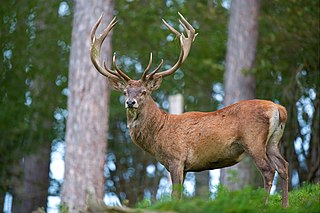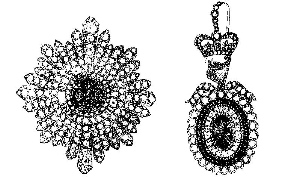 W
WBrigid's cross or Brigit's cross is a small cross usually woven from rushes. Typically it has four arms tied at the ends and a woven square in the middle. Historically, there were also three-armed versions.
 W
WThe Celtic cross is a form of Christian cross featuring a nimbus or ring that emerged in Ireland, France and Great Britain in the Early Middle Ages. A type of ringed cross, it became widespread through its use in the stone high crosses erected across the islands, especially in regions evangelized by Irish missionaries, from the 9th through the 12th centuries.
 W
WThe Celtic harp is a triangular frame harp traditional to Ireland, Wales, and Scotland. It is known as cláirseach in Irish and clàrsach in Scottish Gaelic. In Ireland and Scotland, it was a wire-strung instrument requiring great skill and long practice to play, and was associated with the Gaelic ruling class. It appears on Irish and British coins, the coat of arms of the Republic of Ireland, Montserrat, the United Kingdom and Canada as well as the flag of Montserrat.
 W
WThe coat of arms of Ireland is blazoned as Azure a harp Or, stringed Argent. These arms have long been Ireland's heraldic emblem. References to them as being the arms of the king of Ireland can be found as early as the 13th century. These arms were adopted by Henry VIII of England when he ended the period of Lordship of Ireland and declared Ireland to be a kingdom again in 1541. When the crowns of England, Scotland and Ireland were united in 1603, they were integrated into the unified royal coat of arms of kingdoms of England, Scotland and Ireland. The harp was adopted as the emblem of the Irish Free State when it separated from the United Kingdom in 1922. They were registered as the arms of Ireland with the Chief Herald of Ireland on 9 November 1945.
 W
WThe red deer is one of the largest deer species. A male red deer is called a stag or hart, and a female is called a hind. The red deer inhabits most of Europe, the Caucasus Mountains region, Anatolia, Iran, and parts of western Asia. It also inhabits the Atlas Mountains in Morocco and Tunisia, being the only species of deer to inhabit Africa. Red deer have been introduced to other areas, including Australia, New Zealand, the United States, Canada, Peru, Uruguay, Chile and Argentina. In many parts of the world, the meat (venison) from red deer is used as a food source.
 W
WThe harp is a stringed musical instrument that has a number of individual strings running at an angle to its soundboard; the strings are plucked with the fingers. Harps can be made and played in various ways, including standing or sitting and in orchestras or concerts. Its most common form is triangular in shape and made of wood. Some have multiple rows of strings and pedal attachments.
 W
WThe Jewels Belonging to the Most Illustrious Order of Saint Patrick, commonly called the Irish Crown Jewels or State Jewels of Ireland, were the heavily jewelled star and badge regalia created in 1831 for the Sovereign and Grand Master of the Order of St. Patrick, an order of knighthood established in 1783 by George III as King of Ireland to be an Irish equivalent of the English Order of the Garter and the Scottish Order of the Thistle. The British monarch was the Sovereign of the order, as monarch of Ireland until 1801 and of the United Kingdom of Great Britain and Ireland thereafter. The Lord Lieutenant of Ireland was the Grand Master in the absence of the Sovereign. The insignia were worn by the Sovereign at the investiture of new Knights as members of the order, and by the Grand Master on other formal ceremonial occasions. They were stolen from Dublin Castle in 1907 along with the collars of five knights of the order. The theft has never been solved and the jewels have never been recovered.
 W
WThe Irish Wolfhound is a historic sighthound dog breed from Ireland that has, by its presence and substantial size, inspired literature, poetry and mythology. Like all sighthounds, it was used to pursue game by speed; it was also famed as a guardian dog, specializing in protection against and for the hunting of wolves. The original dog-type was presumed extinct by most knowledgeable authors but recreated specifically for the canine fancy mainly by Captain George A. Graham in the late 19th century. The modern breed, classified by recent genetic research into the Sighthound United Kingdom Rural Clade, has been used by coursing hunters who have prized it for its ability to dispatch game caught by other, swifter sighthounds.
 W
WSaint Patrick's Saltire or Saint Patrick's Cross is a red saltire on a white field. In heraldic language, it may be blazoned "argent, a saltire gules". The Saint Patrick's Flag is a flag composed of Saint Patrick's Saltire. The origin of the saltire is disputed. Its association with Saint Patrick dates from the 1780s, when the Anglo-Irish Order of Saint Patrick adopted it as an emblem. This was a British chivalric order established in 1783 by George III. It has been suggested that it derives from the arms of the powerful Geraldine or FitzGerald dynasty. Most Irish nationalists and others reject its use to represent Ireland as a "British invention" "for a people who had never used it".
 W
WA shamrock is a young sprig, used as a symbol of Ireland. Saint Patrick, Ireland's patron saint, is said to have used it as a metaphor for the Christian Holy Trinity. The name shamrock comes from Irish seamróg [ˈʃamˠɾˠoːɡ], which is the diminutive of the Irish word seamair óg and simply means "young clover".
 W
WSt Patrick's blue is a name often mistakenly applied to several shades of blue associated with Ireland. The official colour of Ireland in heraldic terms is azure blue. The colour blue's association with Saint Patrick dates from the 1780s, when it was adopted as the colour of the Anglo-Irish Order of St Patrick. The term refers to a sky blue used by the Order of St Patrick, often confused in Ireland with a darker, rich blue. There is no de jure national colour in Ireland, with the only reference to any colour(s) appearing in Article 7 of the Irish Constitution in regards to the national flag. However, while green is the de facto national colour of Ireland, representing Ireland in many sporting, cultural, and business events, azure blue is still found in symbols of both the state and the island.